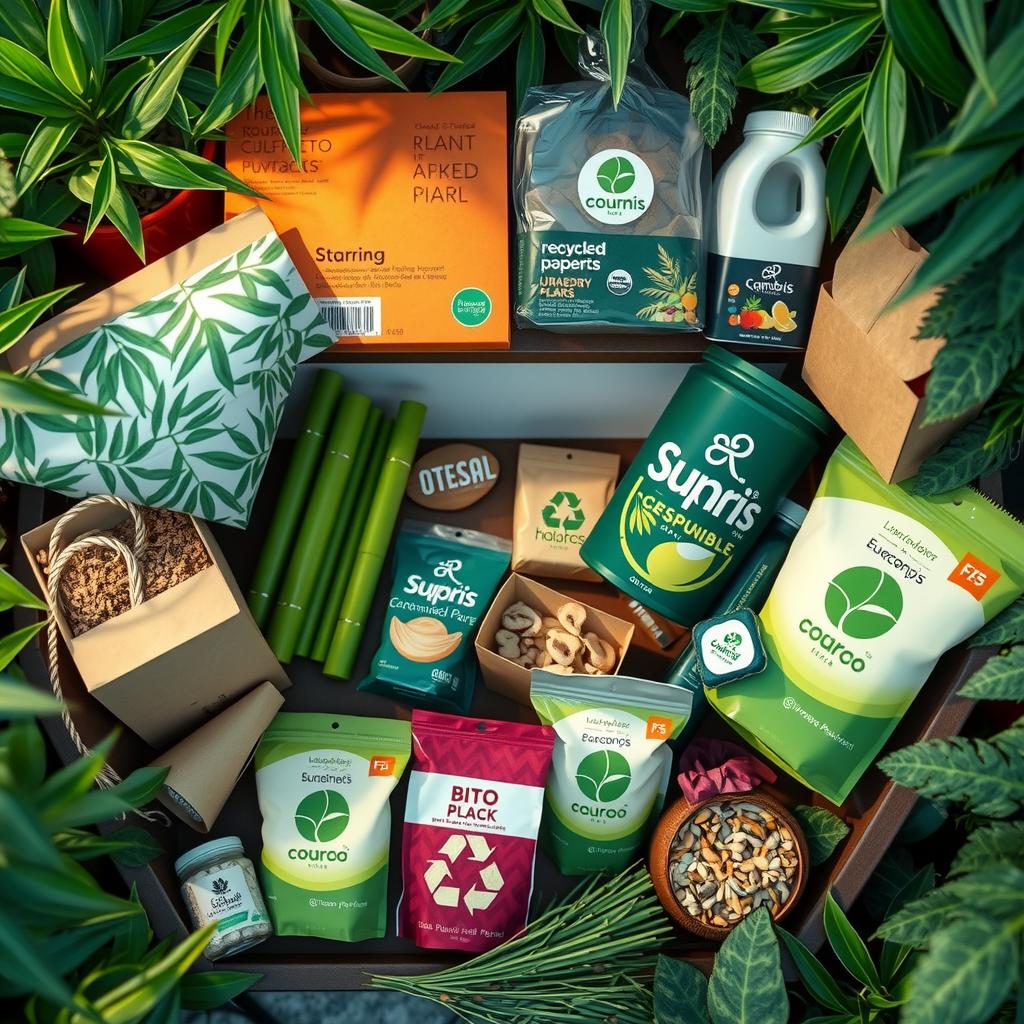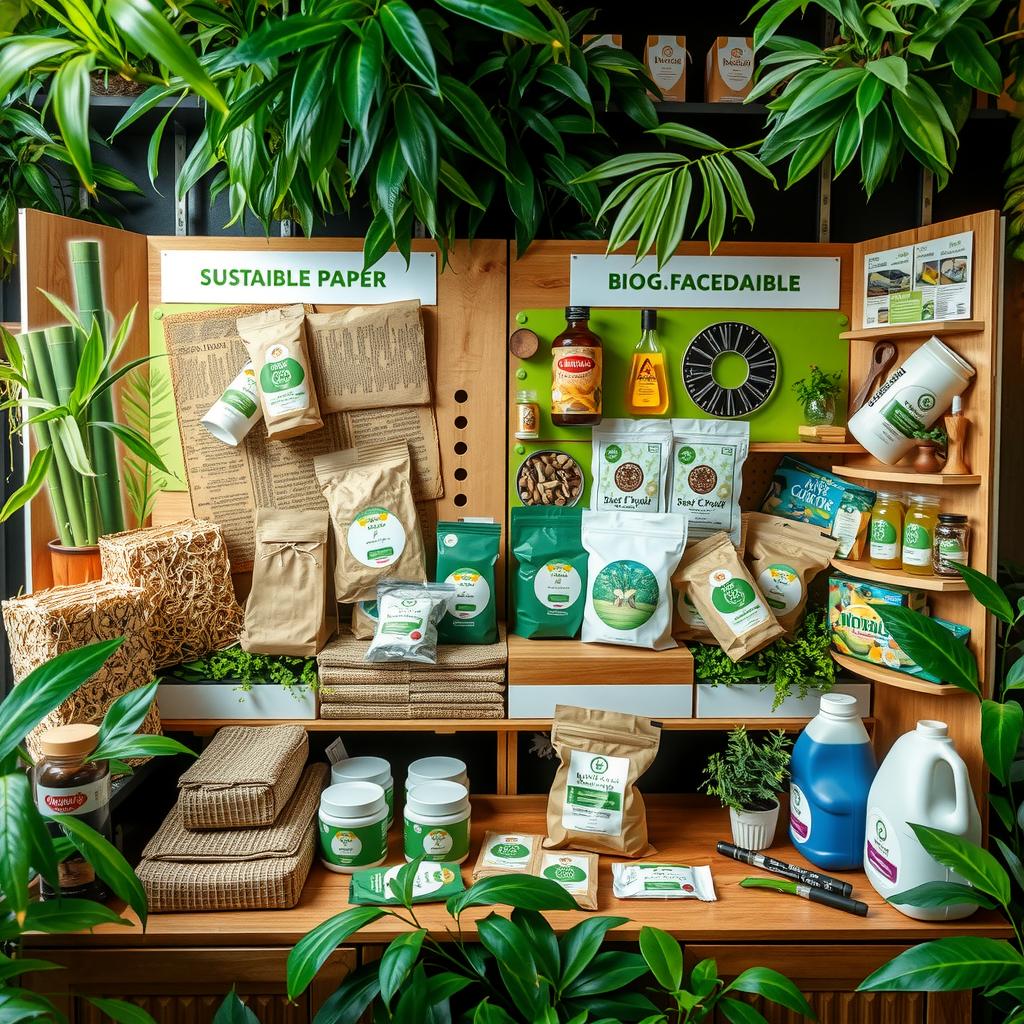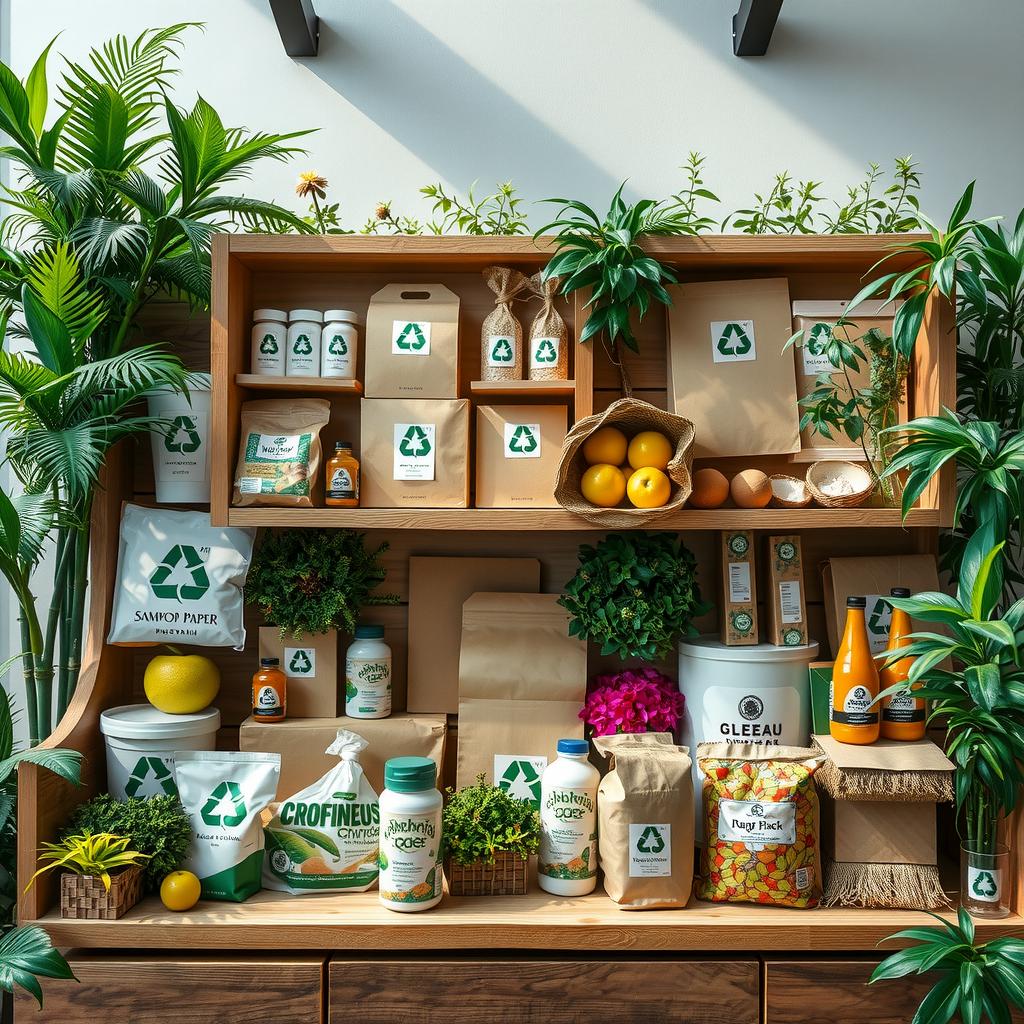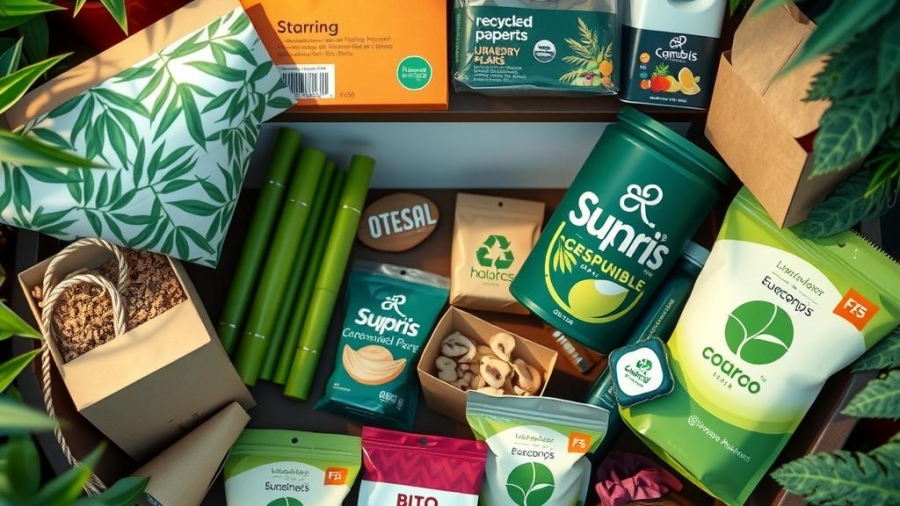As consumers become increasingly aware of the environmental impact of traditional packaging methods, the demand for sustainable packaging solutions has surged. The plastic pollution crisis is a pressing issue that threatens ecosystems and wildlife, making it imperative for businesses to reconsider their packaging strategies. This blog post delves into the world of sustainable packaging alternatives, examining various eco-friendly options available today. By exploring biodegradable materials, recyclable options, and innovative sustainable designs, readers will gain insights into how these alternatives can effectively reduce waste while meeting consumer expectations.
The core value of this article lies in its comprehensive comparison of different sustainable packaging choices. As companies strive to align with sustainability goals and improve their brand image, understanding which packaging solutions offer genuine benefits becomes essential. The exploration includes not only the types of materials available but also an analysis of their environmental impact and practicality in real-world applications.
By providing detailed information on green packaging options—from compostable wrappers to reusable containers—this post aims to highlight effective ways businesses can implement these practices without compromising quality or customer satisfaction. Readers will discover how adopting such measures contributes not only to waste reduction but also enhances corporate responsibility in today’s eco-conscious market.
Join us as we navigate through this crucial topic that promises both ecological advantages and economic viability. The journey towards more responsible consumption starts here; let’s uncover which sustainable packaging alternatives might be right for you or your business!

Key points:
-
Understanding Biodegradable Materials: The rise of sustainable packaging alternatives has brought biodegradable materials to the forefront. These materials, designed to break down naturally over time, significantly reduce environmental impact compared to traditional plastics. By choosing biodegradable options, businesses can effectively contribute to waste reduction while enhancing their commitment to eco-friendly practices. This choice not only aligns with sustainability goals but also appeals to consumers increasingly concerned about plastic pollution.
-
Evaluating Recyclable Options: Another critical aspect of contemporary packaging solutions is the use of recyclable materials. These options allow for a circular economy approach where products can be repurposed rather than discarded. Implementing recyclable packaging contributes positively towards reducing landfill waste and minimizing ecological footprints. As stakeholders examine various sustainable packaging alternatives, understanding the recycling process and its effectiveness will aid them in making informed decisions that prioritize both functionality and sustainability.
-
Adopting Sustainable Design Principles: Embracing sustainable design principles is essential for any organization looking to enhance its brand value through eco-conscious practices. Integrating innovative designs with green packaging options allows companies not only to meet consumer demands for environmentally responsible choices but also fosters an image rooted in sustainability. By focusing on durability and cost-effectiveness alongside environmental considerations, organizations can navigate their transition toward effective sustainable packaging alternatives, ultimately redefining responsible consumption in today’s market landscape.

The Rising Tide of Plastic Waste
Understanding the Scope of the Crisis
The plastic waste crisis has emerged as one of the most pressing environmental challenges of our time, demanding immediate attention and action. With millions of tons of plastic produced annually, a significant portion ends up in landfills and oceans, leading to severe environmental degradation. According to recent studies, it is estimated that by 2030, global plastic production could reach over 500 million tons per year if current trends continue. This alarming statistic underlines an urgent need for sustainable packaging alternatives that can mitigate this dire situation. In recent decades, reliance on conventional plastics has skyrocketed due to their low cost and convenience; however, their detrimental impact on ecosystems and wildlife cannot be overlooked. Marine life is particularly vulnerable as plastics break down into microplastics—tiny particles that infiltrate food chains and ultimately affect human health as well. Therefore, transitioning towards sustainable packaging solutions becomes imperative not only for ecological preservation but also for public health.
The Role of Sustainable Packaging Alternatives
A Shift Towards Eco-Friendly Solutions
Sustainable packaging alternatives play a crucial role in addressing the plastic waste crisis by offering environmentally friendly options that reduce dependency on traditional plastics. These innovative solutions range from biodegradable materials made from natural resources like cornstarch or sugarcane to recyclable materials designed specifically for circular economies. For example, biodegradable bags decompose naturally within months instead of persisting in landfills for decades—a stark contrast to conventional polyethylene bags which take hundreds of years to break down completely. Furthermore, companies are increasingly adopting sustainable design principles by utilizing minimalistic approaches or multi-use systems that promote waste reduction at every stage—from production through disposal. By integrating these eco-friendly alternatives into product lines and supply chains effectively, businesses not only enhance their brand reputation but also contribute significantly to lowering carbon footprints associated with manufacturing processes.
Economic Implications and Market Trends
Embracing Green Packaging Options
The transition toward green packaging options is gaining traction among consumers who are becoming more environmentally conscious about their purchases. Recent surveys indicate a growing preference for products packaged sustainably—over 70% of respondents expressed interest in eco-friendly packaging choices when making buying decisions. As consumer demand shifts towards sustainability-focused brands, businesses have begun investing heavily in research and development aimed at discovering new eco-friendly materials capable of replacing traditional plastics without compromising functionality or aesthetic appeal. Consequently, companies embracing these innovations stand poised not only to capture market share but also benefit economically from potential cost savings associated with reduced material usage provided by advanced designs such as concentrated liquids requiring smaller containers compared with standard versions found today.
Innovations Shaping Future Packaging Practices
Pioneering New Frontiers
To combat the ongoing challenges posed by plastic pollution effectively requires collaboration across industries alongside continued investment into cutting-edge technology focused on developing sustainable practices within manufacturing sectors globally—an essential evolution necessary if humanity hopes ever truly eradicate its dependence upon harmful substances like single-use plastics altogether! Innovative startups leverage advancements such as compostable films derived from agricultural residues while established corporations explore novel bioplastics created through bioengineering techniques intended explicitly toward maintaining high performance levels similar those offered via petroleum-derived counterparts ultimately ensuring consumer needs remain met throughout this transformative period marked largely characterized increasing awareness surrounding climate change impacts driving calls action worldwide directed primarily tackling mounting issues linked directly excessive consumption non-renewable resources presently dominating markets today!

Exploring Sustainable Packaging Options
An In-Depth Look at Eco-Friendly Solutions
In an era where environmental consciousness is paramount, sustainable packaging alternatives have emerged as a crucial element of modern business practices. Companies are increasingly turning to biodegradable materials and recyclable materials as part of their commitment to reducing their environmental impact. These innovative packaging solutions not only cater to the growing consumer demand for eco-friendly products but also present significant advantages in terms of waste reduction and brand loyalty. For instance, biodegradable materials break down naturally over time, significantly minimizing landfill contributions compared to traditional plastics which can take hundreds of years to decompose. As noted by industry experts, “The transition towards biodegradable options is essential for mitigating pollution and fostering a healthier planet.”
However, while these green packaging options boast undeniable benefits, there are potential drawbacks that businesses must carefully consider. The production processes for some biodegradable materials may involve energy-intensive procedures or require specific conditions for degradation that are not always met in standard disposal systems. Moreover, the cost associated with sourcing sustainable design elements can sometimes deter small businesses from making the switch despite its long-term ecological advantages. A comparative analysis reveals that while initial investments in eco-friendly alternatives might be higher than conventional packaging methods, they often lead to reduced costs associated with waste management and increased customer satisfaction.
On the other hand, recyclable materials offer an alternative path toward sustainability by enabling consumers to participate actively in reducing waste through recycling programs. When utilized properly within a circular economy framework, recyclable packaging can substantially decrease resource consumption and emissions linked with production processes. Statistics indicate that when consumers perceive a product packaged sustainably—be it through biodegradable substances or fully recyclable designs—they are more likely to support brands committed to environmental stewardship.
As companies navigate this evolving landscape of sustainable packaging innovations—balancing functionality with ecological responsibility—it becomes evident that choosing between biodegradable versus recyclable options requires thoughtful consideration tailored toward specific operational needs and consumer expectations alike. It’s vital for businesses not merely to adopt these practices but also educate their audiences on proper disposal methods alongside encouraging participation in recycling initiatives.
In summary, exploring various eco-friendly packaging solutions illuminates both opportunities and challenges inherent within the realm of sustainability efforts across industries today; reflecting broader societal shifts towards prioritizing our planet’s health remains imperative if we hope to cultivate lasting change moving forward.
The Impact of Sustainable Practices on Brand Value
Elevating Brand Reputation through Green Packaging
In the contemporary marketplace, brands are increasingly recognizing that sustainable packaging is not merely a trend but a crucial component of their overall strategy. By adopting eco-friendly alternatives, companies can significantly enhance their brand reputation while making meaningful contributions to environmental preservation. This shift towards biodegradable materials and recyclable options reflects an acute awareness among consumers regarding the impact of packaging waste on the planet. Research indicates that 66% of global consumers are willing to pay more for sustainable brands, underscoring how critical it is for businesses to integrate green practices into their operations (Nielsen, 2015).
The implementation of innovative packaging solutions such as compostable films and reusable containers allows brands to demonstrate commitment to sustainability without compromising product integrity or customer experience. For instance, many leading firms have transitioned from traditional plastics to recyclable materials, furthering both waste reduction efforts and consumer trust. Such practices do not only mitigate negative environmental impacts; they also align with the values held by eco-conscious consumers who prioritize purchasing from responsible companies.
Moreover, embracing sustainable design principles helps in creating a narrative around transparency and accountability. Brands that openly communicate their journey toward reducing carbon footprints often find themselves resonating deeply with customers who appreciate authenticity. In this context, businesses should consider highlighting specific elements like sourcing methods and lifecycle assessments in marketing campaigns—this level of detail fosters loyalty among informed shoppers.
Additionally, integrating green packaging options can lead to operational efficiencies that ultimately benefit the bottom line as well as bolster brand equity. For example, using lightweight materials reduces shipping costs while decreasing greenhouse gas emissions during transportation—a win-win scenario for both profit margins and planet preservation.
As consumer preference shifts towards products packaged in environmentally friendly ways, it’s clear that incorporating sustainability into core business strategies enhances brand value significantly. Companies committed to sustainable packaging alternatives position themselves advantageously within crowded markets by appealing directly to modern sensibilities focused on ethics over convenience alone.
Building Consumer Trust through Environmental Responsibility
A strategic focus on sustainable practices serves dual purposes: enhancing brand reputation while contributing positively towards ecological conservation efforts globally. Businesses must understand the importance of aligning with shifting consumer expectations regarding environmental responsibility; failure to adapt could risk losing relevance in an ever-evolving market landscape characterized by conscious consumption trends.
Furthermore, companies leveraging green packaging options effectively cultivate stronger connections with target audiences driven by shared values concerning sustainability initiatives—ultimately creating substantial competitive advantages over less proactive competitors incapable or unwillingly addressing these emerging demands head-on.
To illustrate this point further: A recent study showed that organizations investing heavily into green innovations experienced upsurges averaging 20-30% increases year-over-year compared against peers resistant towards change (GreenBiz Group Report). These statistics highlight just how imperative it is for enterprises seeking longevity amid rising competition levels—to innovate continuously across every facet including but not limited solely upon product offerings & distribution methodologies utilized today!
In conclusion—embracing sustainable practices symbolizes far more than simple compliance measures—it represents transformative opportunities capable not just impacting organizational growth trajectories but fundamentally reshaping entire industries long-term!
A Comprehensive Guide to Sustainable Packaging Alternatives: Which Option is Right for You?
The growing concern over plastic waste has propelled the search for sustainable packaging alternatives into the spotlight. With various options available, consumers and businesses are faced with choices that not only aim to reduce waste but also significantly lower their environmental impact. Among these options, biodegradable materials stand out as a practical solution. These materials break down naturally, contributing to waste reduction and minimizing landfill contributions. However, it is essential to consider their durability and application in specific use cases before making a switch.
Another crucial aspect of sustainable packaging solutions lies in the realm of recyclable materials. Unlike single-use plastics that often end up in our oceans and landfills, recyclable packaging can be repurposed multiple times—significantly reducing overall environmental strain. Businesses adopting green packaging options can enhance their brand image while appealing to increasingly eco-conscious consumers who prioritize sustainability in their purchasing decisions.
Additionally, sustainable design principles play a vital role in determining which eco-friendly alternatives are suitable for various products. This approach encourages companies to rethink how they package goods by optimizing material usage without compromising on quality or function. By integrating innovative designs with sustainable practices, brands can achieve significant reductions in waste while aligning themselves with broader ecological goals.
FAQ:
Q: What are some examples of biodegradable materials used in packaging?
A: Common examples include plant-based plastics like PLA (polylactic acid), mushroom mycelium-based packing foam, and paper made from recycled content.
Q: How do recyclable materials contribute to sustainability?
A: Recyclable materials help reduce environmental damage by allowing products to be reprocessed into new items instead of ending up as waste; this conserves resources and energy.
Q: Why is sustainable design important when choosing packaging solutions?
A: Sustainable design focuses on creating efficient packages that minimize resource use while maximizing functionality; this leads not only to reduced environmental impact but also cost savings over time.
